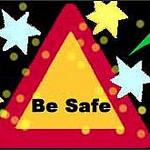Safe science (Spring 2014)
By Mary Bigelow
Posted on 2014-05-12
 Questions and discussions about safety are often seen in the NSTA e-mail listserves and discussion forums. Each month, columns on safety in the science lab are featured in NSTA’s Science Scope (Scope on Safety) and The Science Teacher (Safer Science). These columns are written by Ken Roy, Director of Environmental Health and Safety for Glastonbury Public Schools in Glastonbury, CT, and NSTA’s Science Safety Compliance Consultant.
Questions and discussions about safety are often seen in the NSTA e-mail listserves and discussion forums. Each month, columns on safety in the science lab are featured in NSTA’s Science Scope (Scope on Safety) and The Science Teacher (Safer Science). These columns are written by Ken Roy, Director of Environmental Health and Safety for Glastonbury Public Schools in Glastonbury, CT, and NSTA’s Science Safety Compliance Consultant.
These are relevant for all K-12 science teachers and school administrators, regardless of what grade level or science course you teach. And NSTA members have access to them, regardless of which print journal you receive. I’ve collected these into a Resource Collection through NSTA’s Learning Center:
- Safety requires collaboration (Science Scope April 2014)—If you’re collaborating on STEM projects, here are some considerations for safe practices in the area of engineering.
- LAMP: Shining a light on safety (Science Scope March 2014)—LAMP is an acronym for lead, asbestos, mercury, and polychlorinated biphenyls (PCBs). The article describes where in the school building each of these health hazards can be found and the symptoms of exposure (and remember that you’re in the building all day for many years!).
- Kitchen Chemistry and Safety (Science Scope February 2014)–This is a must-read article for every K-12 teacher. Using common household substances such as sodium bicarbonate, vinegar, and even food coloring in a lab setting requires a different level of awareness than if a teacher uses these substances at home. “If a safety incident should occur without these safeguards in place under a teacher’s duty of care, the teacher has potential liability—even if the problem occurred using common household products.”
- More must-reads for K-12 teachers and administrators: Eating in the lab: A recipe for disaster (Science Scope January 2014) and Don’t Make Your Lab a McDonalds (The Science Teacher March 2014) Snacks, lunches, treats, coffee breaks, parties–in a word…Don’t! And here’s why.
- Eyewash stations and showers in the lab (The Science Teacher April 2014)—“Teachers and students shouldn’t work with hazardous chemicals unless these engineering controls are in place. If a science teacher proceeds with using the hazardous chemicals in the lab without the needed safety equipment, he or she shares legal liability with the school district.”
- Protecting Against Attack (The Science Teacher February 2014)—Your lab could be an attractive target for vandals and other criminal activity. Here are suggestions for securing lab and storage areas.
Each month, Scope on Safety also includes a Q&A on a safety-related issue. If you’re looking for a science department discussion topic, take your pick (I’d advise the ones on food for starters)! For more on safety topics, go to NSTA’s SciLinks and use “safety” as the keyword.
Graphic: http://www.flickr.com/photos/epicfireworks/3646350410
Disclaimer: The views expressed in this blog post are those of the author(s) and do not necessarily reflect the official position of the National Science Teaching Association (NSTA).

